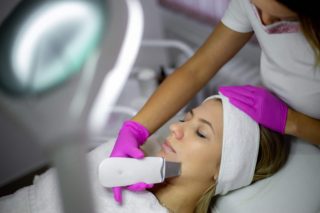4 Conditions You Didn’t Know Dermatologists Treat
November 11, 2020 by VitalSkin Dermatology

When most of us think of dermatologists, what we think of first are acne and aging. That’s what dermatologists spend most of their time treating, yes? Well, not really.
Dermatologists treat a wide range of disorders, including some that just might surprise you. The following are four conditions that you just might not realize can be treated by your favorite skin doctor.
1) Hair Loss
Your hair is thinning. Who do you go see? That’s a question that might confound a lot of people. Your general practitioner? The… hair doctor? Surprisingly, it’s your dermatologist who is the best bet for addressing hair loss. After all, the root of your hair is under the skin, and the health of your scalp skin can affect the condition of your hair, too.
Hair loss can take many forms. There is, of course, the hair loss associated with aging, which both men and women can experience. There is also a condition known as alopecia areata in which hair on your head falls out in patches instead of thinning bit by bit.
Another condition that involves hair loss is Vitamin D deficiency, which can happen most often in individuals with darker complexions. In many cases, your dermatologist can help slow any loss of hair by prescribing topical agents or even injectable steroids. Your dermatologist can also help determine whether you need to see another practitioner as well, if your hair loss involves an underlying medical condition.
2) Hyperhidrosis
What is hyperhidrosis? It’s the medical term that refers to, well, sweating a lot. Hyperhidrosis can be a troublesome and frustrating condition for those who experience it. Someone with this condition, for example, might soak a shirt through without even exercising or have constantly damp palms or a sweaty face.
A dermatologist can help determine the underlying cause of excessive sweating. Treatments such as MiraDry, too, can help eliminate excessive sweating under the armpits and help patients get back to a new and more comfortable normal.
3) Nail Disorders
You might be surprised to know that a dermatologist can help you with nail conditions, as well. This is because many nail conditions are related to fungus on the skin or injury to the skin underneath the nail.
Have you ever stubbed your toe, for example, and watched the nail get black and then fall off? Your dermatologist can help with that, prescribing topical and oral medication and making recommendations for supplementary treatments at home.
A dermatologist can also help with fungal conditions on nails that cause anything from thickened nails to crumbling nails. Finally, in some cases, your dermatologist can help you determine whether or not an underlying medical condition is at play based on the condition of your nails and make recommendations about seeing a specialist for additional treatment.
4) Unwanted Tattoos
Dermatologists can also help you out with one of your most embarrassing skin conditions— that old tattoo you got a few decades back. Laser technology has come a long way and dermatologists can now safely remove even some of the most complex tattoos over multiple sessions. So, if you are tired of hiding that back tattoo from your college years, head over to your dermatologist. Chances are they can help you out in short order.
Dermatology is a wide-ranging discipline that can help a variety of patients with most anything. Next time you have a nail that’s behaving strangely or concerns about the condition of your hair, sidestep the manicurist and hairstylist and head to your dermatologist. They more likely than not can help you in ways you’ve never expected with these conditions and more.

